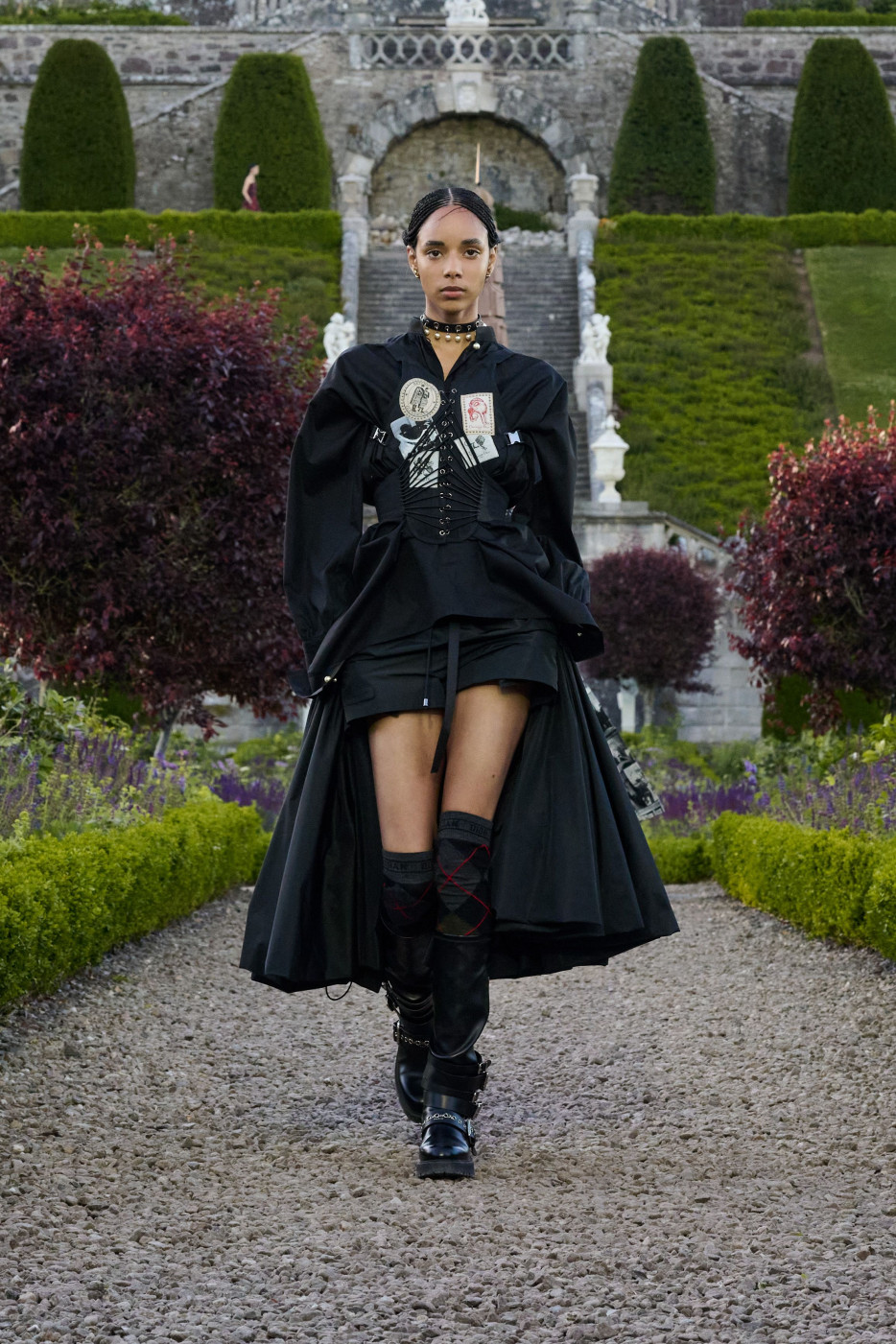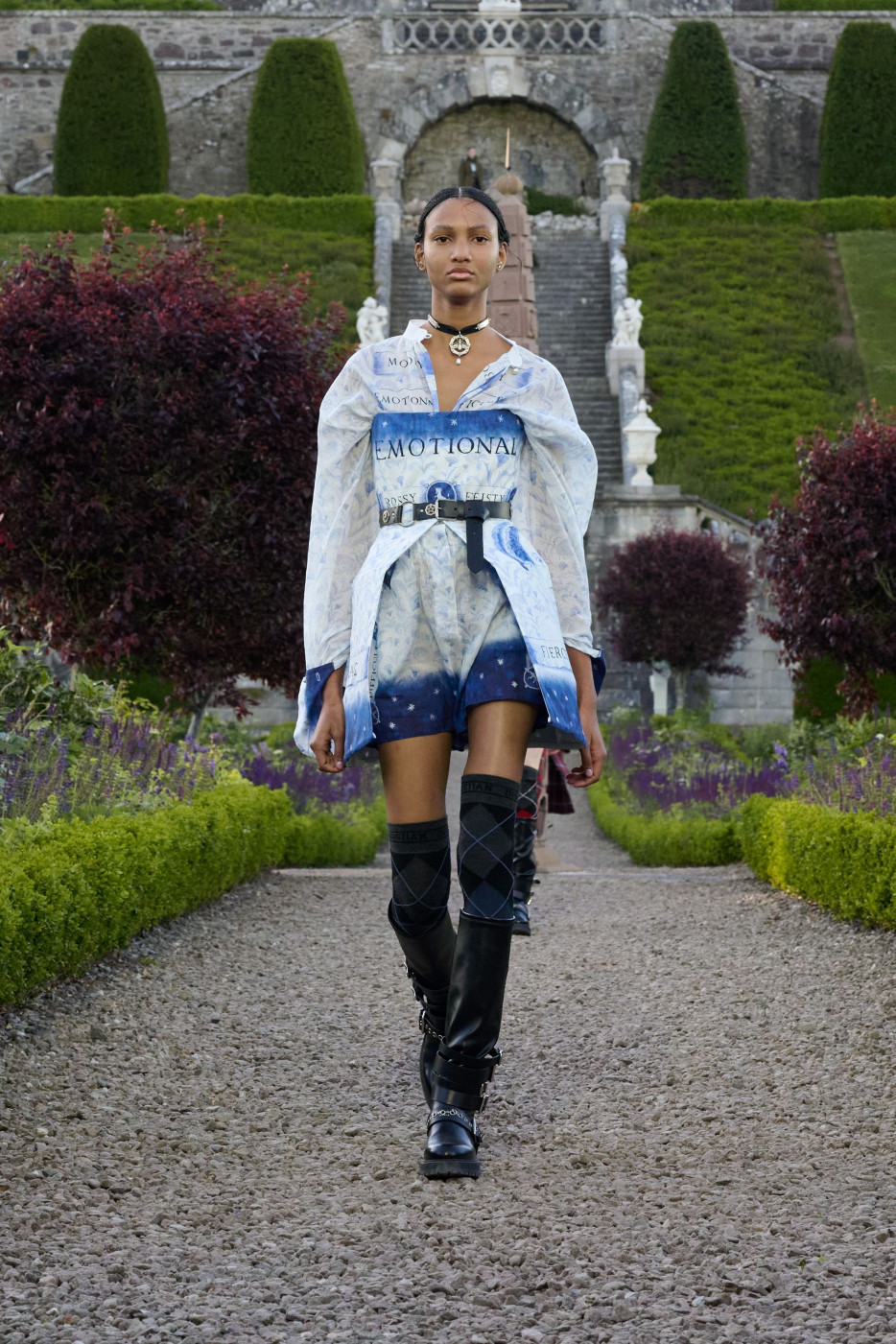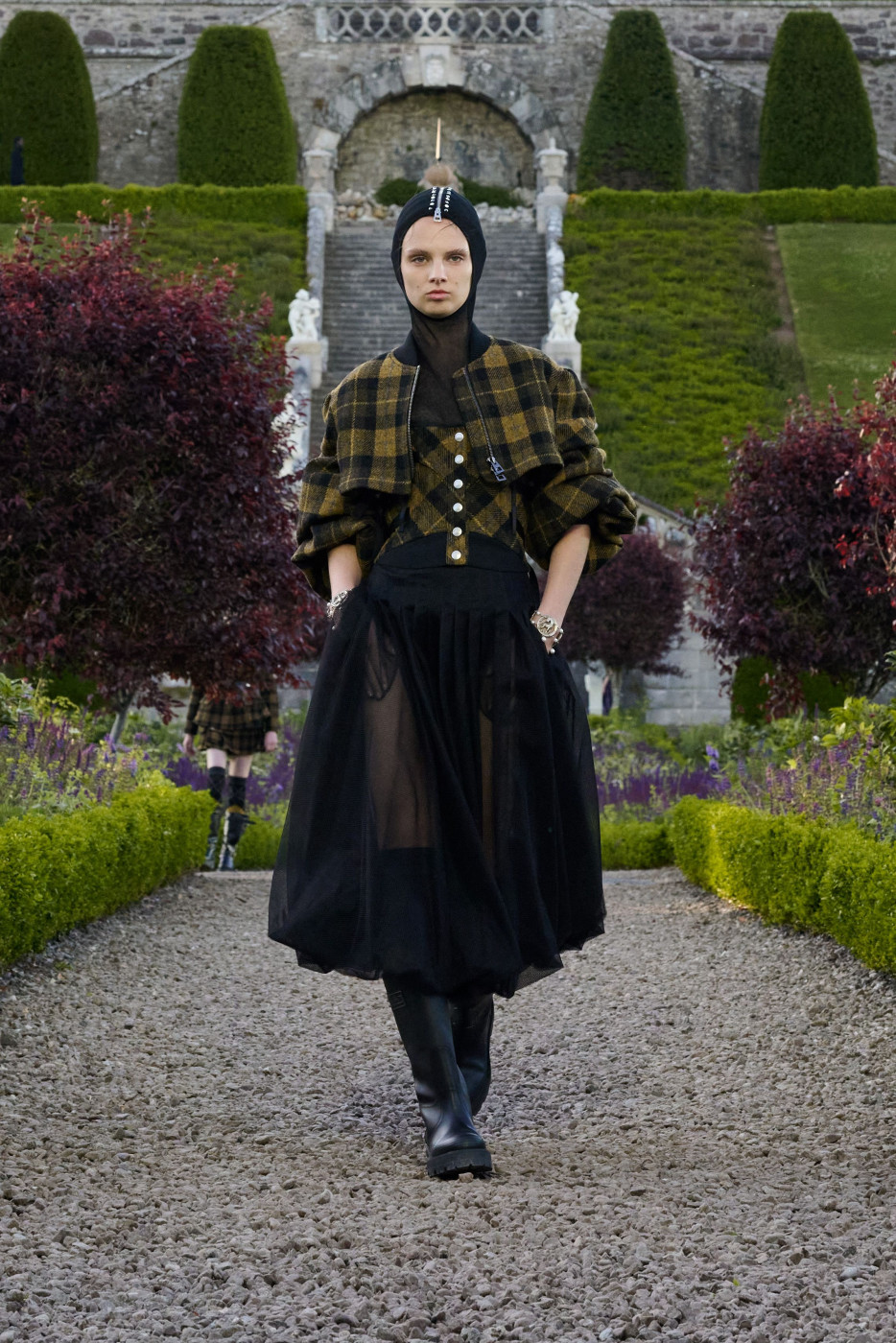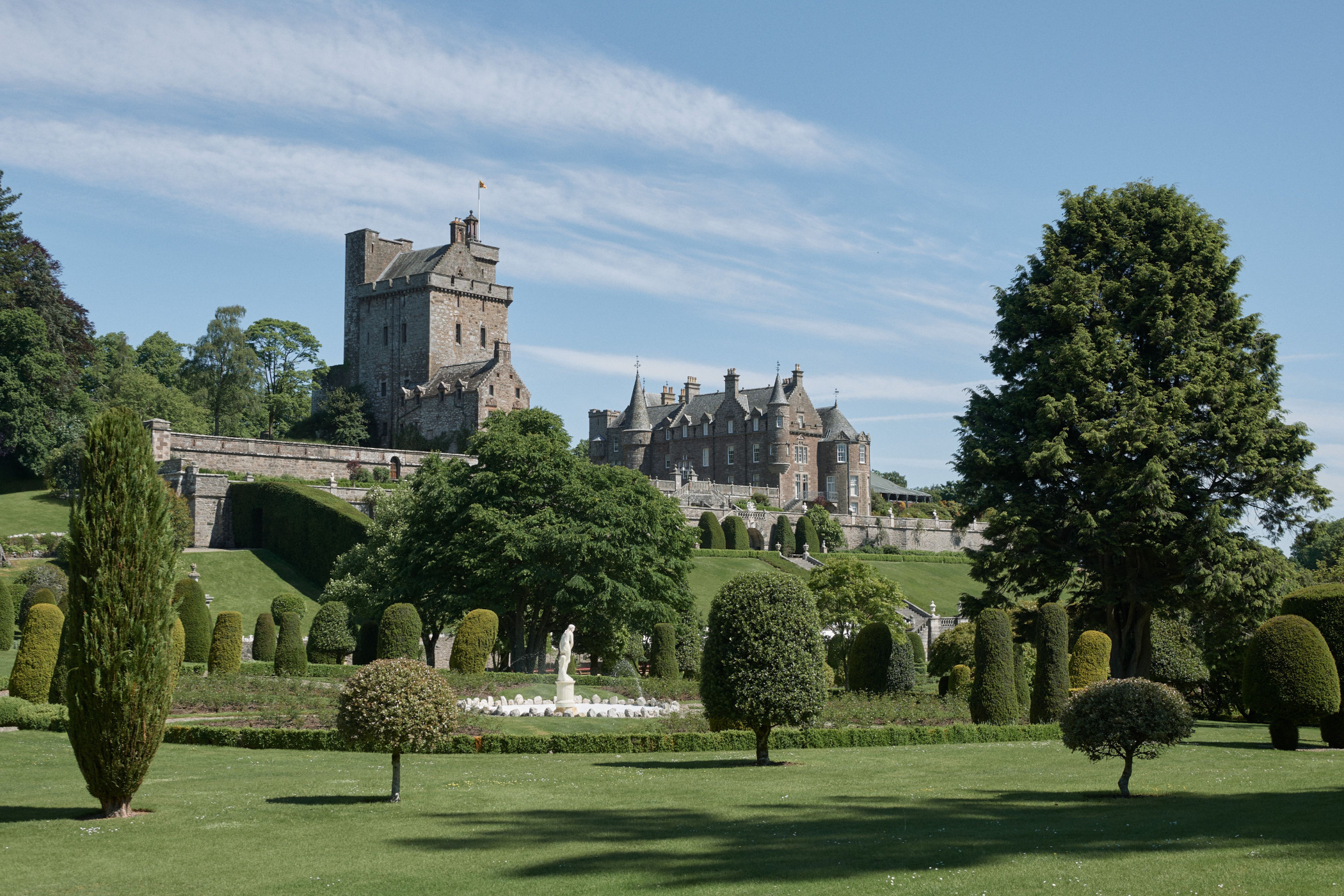
Dreaming of Scotland: Dior Cruise 2025
This season, Maria Grazia Chiuri takes over Scotland, where she presented her vision of a powerful Dior woman in the gardens of Drummond Castle in Edinburgh, revealing several collaborations with local textile manufacturers Harris Tweed, Johnstons of Elgin, Esk Cashmere and ceremonial headwear designer Robert Mackie.
Maria Grazia Chiuri loves to follow the steps of Maison’s founder Christian Dior. This time, she decided to pick up the story of his spring-summer 1955 collection that Monsieur Dior showed in Perthshire, Scotland, at a charity ball in the halls of the Gleneagles Hotel. To give an extra twist, she even “posted” some of the images from the ‘55 showing on the edges of kilts, T-shirts and peacoats in her collection. Chuiri loves a good historical reference and this time her straight-to-the-point approach worked wonderfully. Like a trip down memory lane, when you open an old photo album with pictures of your relatives.
Models strolled in the greeny gardens of Drummond Castle in Edinbourgh (for their resemblance to French gardens, they are often called “the Versailles of Scotland”) to the sounds of the most Scottish instrument - the skirl of bagpipes, played by Finlay MacDonald and the National Piping Centre Pipers - dressed impeccably in one of the most important local motifs, tartans, that were omnipresent in the collection. In royal purple, scarlet red and hunter green. Dresses, skirts, coats, capes, everything got a tartan treatment. At times punkish (poke to Lee McQueen and Vivienne Westwood), at times more classic, but always elegant. No wonder, Monsieur Dior, a huge fan of Scotland, who used to travel there now and then, wrote in his bestseller “The Little Dictionary of Fashion”: “It’s probably the only fancy fabric that resists fashions.”
Mary Stuart, also known as Queen of Scots was another point of reference. Maria Grazia cites author, historian and artist Clare Hunter’s most recent book “Embroidering her Truth: Mary, Queen of Scots and the Language of Power” as a key inspiration. Mary Stuart used to travel between Scotland and France all the time, and she indeed had a love affair with beautiful ball gowns with puff sleeves, patterns and fabrics, and found them the perfect diplomatic weapon to show how nations can build together beauty. A modern-day Mary Stuart would agree: fashion indeed builds bridges.
Traditionally, Maria Grazia Chuiri in her cruise outings, gives a spotlight to local talents. This time was no exception, as she gave the central stage to local tweed and textile manufacturers such as Harris Tweed (their fabrics are to this day crafted by a unique network of islander artisans who weave in their homes on treadle looms) and Johnstons of Elgin; family-owned Esk Cashmere was in charge of knitwear and cashmere, while the headpieces were commissioned to ceremonial headwear designer Rober Mackie, whose artisans worked closely with Maison’s collaborator Stephen Jones on the Scottish bonnets similar to those seen on the pipe bands. Additionally, some of the kilts were created in collaboration with the young Scottish designer Samantha McCoach, behind the cult label Le Kilt, who is building the bridge between tradition and a new generation.
Scotland is the homeland of numerous rock bands (AC/DC, Nazareth, Red Hot Chilli Peppers, Primal Scream, Franz Ferdinand, etc), so some typical rock star attributes were also present in the collection - think hardware leather belts, choker necklaces, military green trenches, sassy slogan embroideries, vinyl mini skirts or studs on denim. There were also pearls, stunning chainmails, adorned with crystals, and Jacobean black velvet, while thistles and unicorns - both symbols of Scotland - decorated frou-frou and decadent sheer lace gowns. And of course, no Scottish collection could be complete without hunting and riding boots, which were also spotted on the catwalk. Happily, this time for once there was no rain during a Dior cruise show. Pure magic!
Courtesy: DIOR
Text: Lidia Ageeva























